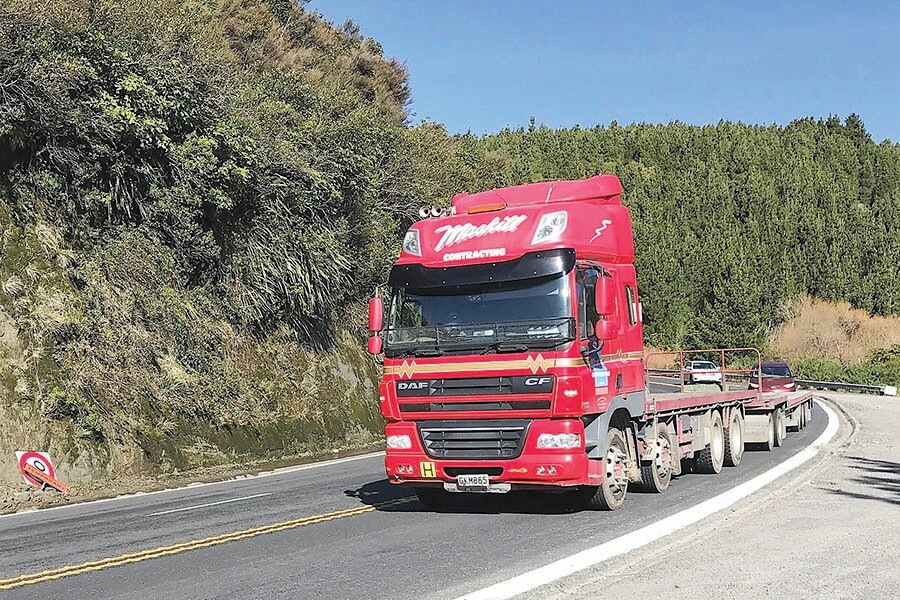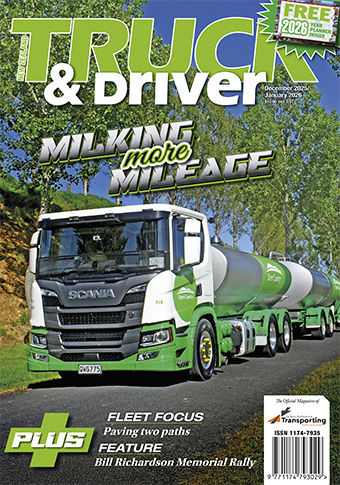Ia Ara Aotearoa Transporting New Zealand News


Driverless vehicles represent a faraway future
Ia Ara Aotearoa Transporting New Zealand recently provided feedback on the Ministry of Transport’s Long-Term Insights Briefing (LTIB) on the impact of autonomous vehicles (AVs) operating on NZ’s roads.
The LTIB said AVs are predicted to fundamentally change the transport sector, although there is still a high degree of uncertainty in actually understanding their potential impact.
On the one hand, AVs could significantly improve road safety outcomes and contribute to a more integrated, accessible and cost-effective transport system for NZ.
On the other hand, they could also introduce new road safety risks (such as hardware and software failures and malicious hacking), make new demands on transport services, and require significant new infrastructure and regulations.
Says Transporting NZ’s CEO Nick Leggett: “It’s pleasing to see the Ministry of Transport cite these issues upfront.
...Ia Ara Aotearoa Transporting New Zealand recently provided feedback on the Ministry of Transport’s Long-Term Insights Briefing (LTIB) on the impact of autonomous vehicles (AVs) operating on NZ’s roads.
The LTIB said AVs are predicted to fundamentally change the transport sector, although there is still a high degree of uncertainty in actually understanding their potential impact.
On the one hand, AVs could significantly improve road safety outcomes and contribute to a more integrated, accessible and cost-effective transport system for NZ.
On the other hand, they could also introduce new road safety risks (such as hardware and software failures and malicious hacking), make new demands on transport services, and require significant new infrastructure and regulations.
Says Transporting NZ’s CEO Nick Leggett: “It’s pleasing to see the Ministry of Transport cite these issues upfront.
“This suggests that, instead of jumping straight to a solutions-based approach, a more conservative assessment based on the actual transition phase should be taken when it comes to what regulatory provisions we need to make.”
The Ministry’s briefing cites the introduction of advanced driver assist systems (ADAS) and the benefits they have brought to safe vehicle operations. However, recent discussion within a Transport Research Laboratory project about ADAS (funded by Waka Kotahi NZ Transport Agency) has suggested its benefits may be overstated.
The LTIB is centred on understanding the potential risks and benefits of AVs for NZ and NZers, ensuring that safety is the key driver behind AV deployment. As people in the transport industry are all too aware, human error is the cause of 90% of deaths and serious injuries on our roads – with alcohol and drugs, excessive speed, fatigue and driver distraction some of the primary contributors to this.
If managed effectively, the potential is for AVs to virtually eliminate a large proportion of the road accidents in NZ.
Says Leggett: “However exciting this is and despite the progress made with AVs and the number of companies exploring the technology and its application to commercial vehicles, our sources indicate the technology is only in its infancy.
“Recent flaws in Tesla’s AV systems have been well documented in the international media, and there have been other incidences where the technology and AI supporting AVs has come up short. It is as yet simply not intuitive enough.
“These issues and the shortcomings with technologies are not likely to be resolved quickly. We are concerned that the technology capability is being oversold as being the panacea to all vehicle crashes.”
Transporting NZ believes the introduction of AVs in NZ will be transitory and occur over time. However, the jury is still out on whether freight vehicle AVs can be a success – even considering the 10-year threshold. Light vehicle AVs are far more likely to become an established section within the vehicle market.
“When we look at the operational environment of the vehicles – the infrastructure and the communications connectivity functionality and their limitations across parts of NZ – the picture of opportunity for AVs is probably less promising,” Leggett says.
“As Transporting NZ constantly seeks to remind government, NZ is a taker of technology. While this allows us to observe and evaluate the success of other jurisdictions’ approaches to the deployment of AVs before committing to a course of action ourselves, it means we are bound to closely follow international developments when it comes to the arrival of new vehicle technologies on our roads.”
In NZ, the application of full autonomy appears unlikely for heavy-duty truck freight applications, but semi-autonomous and driver-assisted autonomy may well become more normalised.
“We’re not entirely sure the connectivity status is at a level to support these vehicles operating using their autonomous or self-reporting features. NZ’s topography and road geometry is well recognised as particularly demanding, so it may be likely that even employing some level of driver-assisted autonomy may be pushing the technology capability to its effective limits at the moment,” explains Leggett.
“We must keep some perspective in all this. NZ is a small country that lacks the economy of scale to be able to withstand the financial impact of making an un-researched and incompletely-evaluated decision on the rollout of AV connectivity when there is still so much water to go under the bridge in terms of the technology. Transporting NZ’s advice is very much to take a wait and see approach.”



 + EQUIPMENT GUIDE - FREE
+ EQUIPMENT GUIDE - FREE
